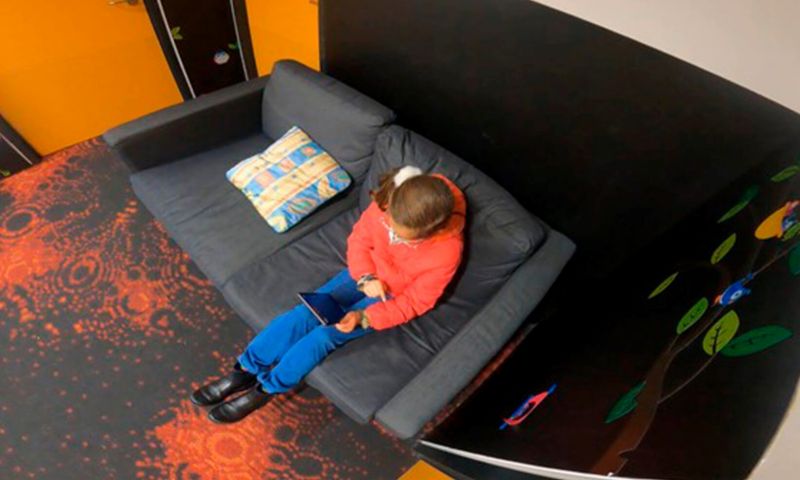Amid a complex landscape of streaming algorithms, new research shows kids struggle to find local content among the flood of international options.
Instead of channel surfing or browsing through a TV guide, Aussie kids today navigate complex streaming platforms and their algorithms to find shows, which is influencing their viewing habits, according to a new study of children aged 7 to 9.
Led by RMIT University researchers, the study involved talking to children, documenting their viewing habits and observing their daily routines.
RMIT's Dr Jessica Balanzategui said most children tended to value algorithmic content recommendations, but they didn't understand the underlying effects, including missing out on local content.
"Across research, policy and industry, we haven't fully addressed the implications of kids' screen time now being driven by children's 'on-demand' viewing selections, which are mediated through algorithmic curation and platform interfaces," she said.
"These are often driven by corporate strategies and interests that can restrict children's access to the available local options."
The research found US-based global streaming video platforms Netflix and YouTube were the most popular, which had flow on effects when it came to the children's ability to find age-appropriate and local content.
RMIT's Dr Djoymi Baker said platforms like Netflix and YouTube can operate as gateways to more mature content.
"Children sometimes saw platforms designed especially for them, like ABC Kids or ME, as skewing too young," she said.
"Once habits form around more mature content it can be difficult to draw kids back to the local content that's being made with them in mind."
But among the children researchers spoke to, some assumed because they mainly watched YouTube and Netflix, they were only watching American content.
Even in cases when their favourite shows were Australian, they sometimes assumed they were American.
Child: "I watch a lot of American. […] They always show the flag and speak American. America's a crazy place […] I do like American shows a lot, but not really Australian shows."
Researcher: "But what about Little Lunch and InBESTigators?" [two Australian shows the child had previously identified as his favourites].
Child: "Little Lunch is definitely American."
Researcher: "No, that one's an Australian show!"
Child: [Physically recoils. Shocked pause] "Well… InBESTigators is American!"
Researcher: "InBESTigators is Australian too!"
Child: [Shocked pause] "WHAT!?"

For the study, each child was observed streaming alone for about 10 minutes and then again with a parent for the same duration, allowing researchers to compare how kids use platforms and choose content on their own versus with a parent.
Australian content was more obvious to children when it featured stereotypical landmarks or animals - like the Australian outback or kangaroos - or when their parents pointed it out.
Local children's television is important because it can help kids connect with their own culture and surroundings, fostering an appreciation for their own community and country.
However, parents generally didn't see encouraging their children to watch local content as a priority given the many other complexities of raising kids today.
This paints a worrying picture for the future of Australian content, with locally made Australian children's television content decreasing by more than 84% between 2019 and 2022, shrinking from 605 hours to just 95 hours.
A key part of the Federal Government's National Cultural Policy is to help children become smart, thoughtful and engaged users of the internet and digital platforms.
Balanzategui said making locally produced children's content more accessible and recognisable on streaming services needs to be addressed as an industry and policy priority.
"If local content was better labelled across the streaming platforms, or perhaps organised in a central hub, it would be easier for young people to discover Australian programs appropriate for their age," she said.
Balanzategui said developing education literacy programs might help children and their parents better navigate the streaming era, as would better labelling of local and age-appropriate content.
"We need to teach kids how algorithms work and why certain things are suggested in a targeted way," she said.
This research forms part of a broader project on Australian children's television cultures funded by the Australian Children's Television Foundation, with researchers from RMIT and Swinburne University of Technology.
RMIT will also launch its new Streaming Industries and Genres Network at ACMI during Social Sciences Week, at the Australian Content in the Streaming Era Symposium on 12 September 2024.
'What is 'children's television' in the streaming era?: Assessing content discoverability through Australian children's streaming platform fluencies', with Jessica Balanzategui, Djoymi Baker and Georgia Clift is published in Convergence: The International Journal of Research into New Media Technologies (DOI: 10.1177/13548565241264002).






